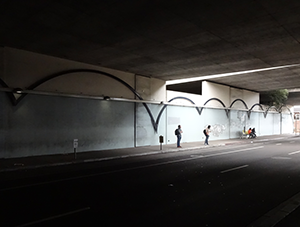BART’s Station Area Planning undertakes studies, programs, and conceptual projects that prioritize improvements to our passenger stations and their surrounding areas to enhance transit ridership and connections to communities. Our efforts advance goals identified in documents adopted by BART’s Board of Directors, like the Strategic Plan and Station Access Policy and Performance Measures by using BART’s Station Experience Design Guidelines and Multimodal Access Design Guidelines. Current and recent projects are found below.
Current Efforts:
Safe Routes to BART
Safe Routes to BART (SR2B) is a grant program sponsored by BART using voter-approved Measure RR capital funds. SR2B is designed to help local agencies improve access for BART customers walking and biking to our stations. Grants to local jurisdictions in Alameda, Contra Costa and San Francisco Counties help our partner agencies deliver capital projects for streets, sidewalks, trails and plazas that serve riders on their way to and from BART.
Safe Trips to BART: An Action Plan for Safer Roadways
Safe Trips to BART: An Action Plan for Safer Roadways identifies investments that could reduce or eliminate traffic deaths and severe injuries, such as transportation infrastructure improvements on roadways in and around BART station areas and BART service improvements, that encourage more people to take transit instead of driving. It is funded by Safe Streets and Roads for All, a federal program by the Department of Transportation.
Concord Station Lighting and Uninterrupted Power Supply Upgrades
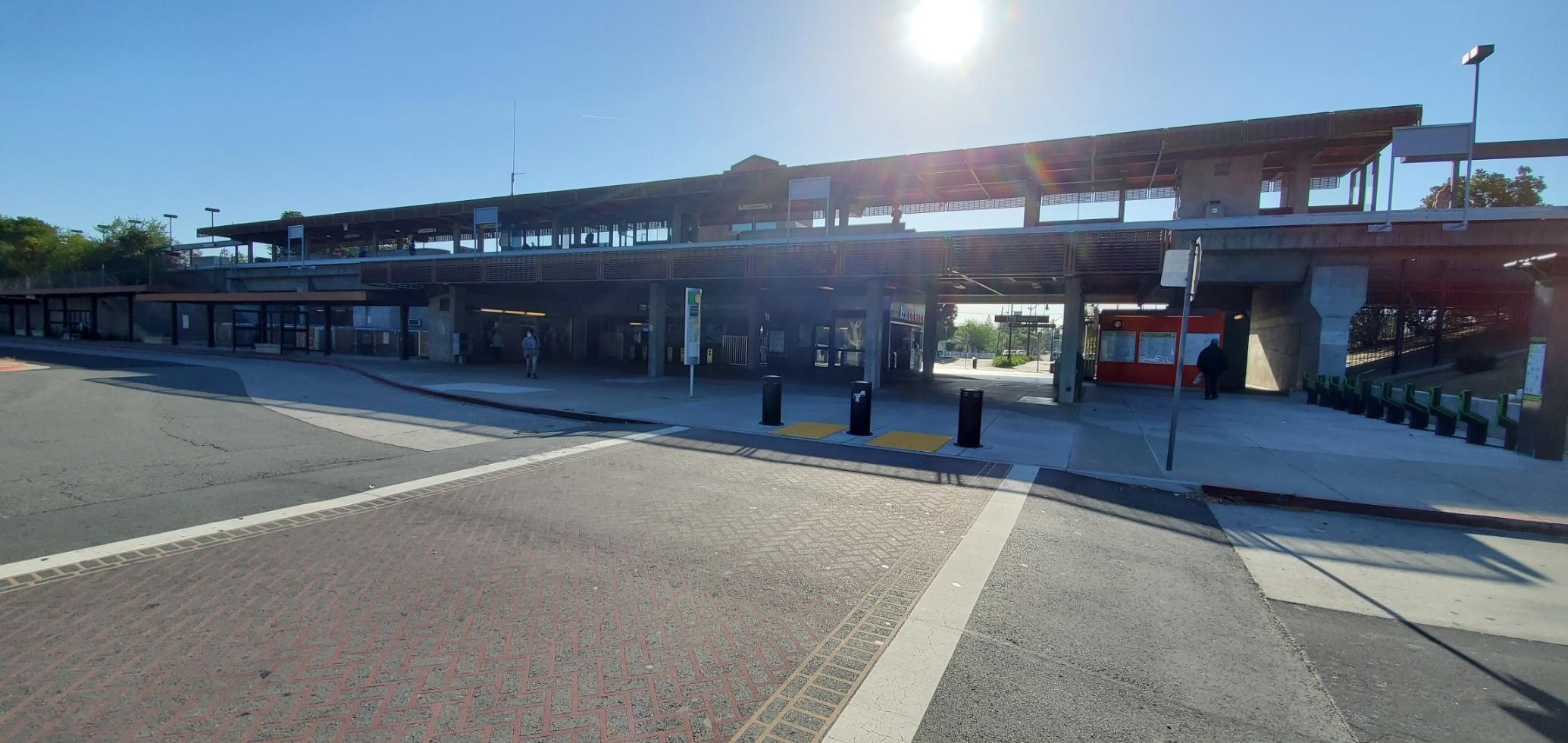
Lake Merritt Plaza Upgrade
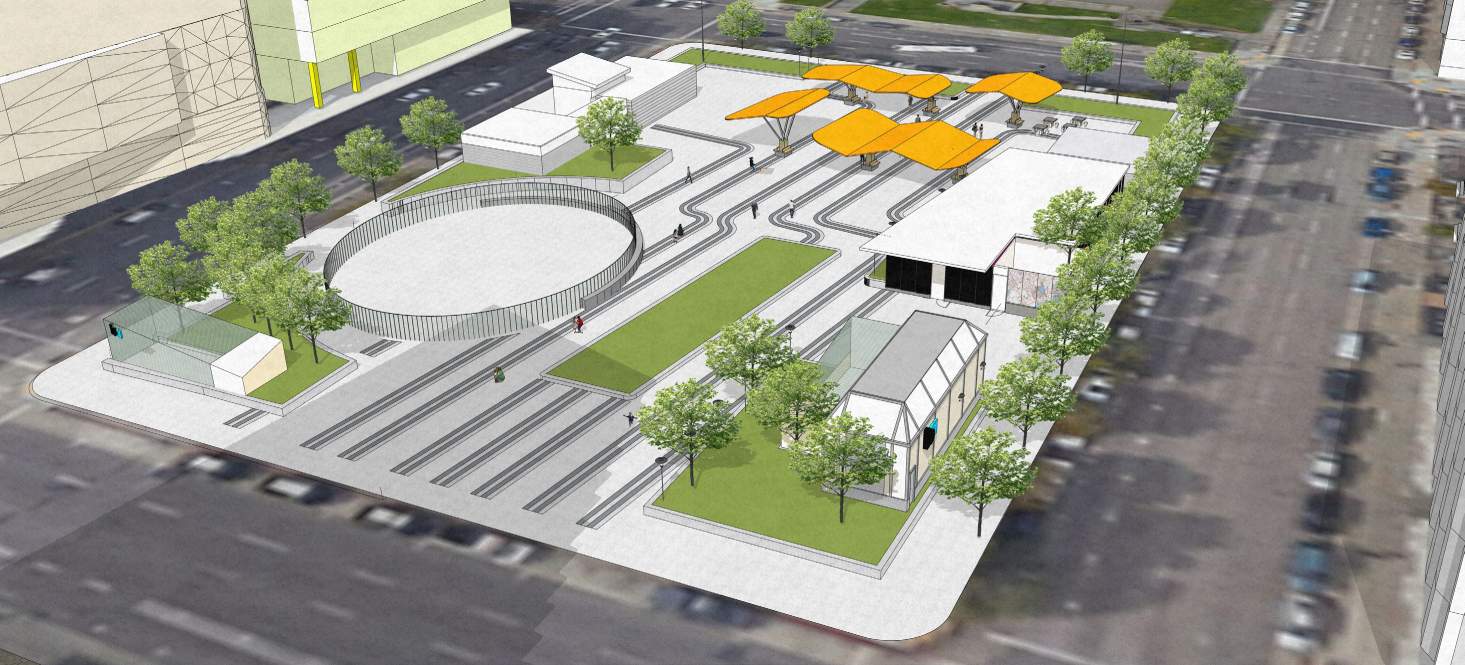
MacArthur 40th St Underpass Safety Improvements
BART is working to improve the lighting along 40th Street at the I-580 underpass at the MacArthur BART station. BART is coordinating with the City of Oakland, Caltrans and other agencies, with input from riders and the community.
North Berkeley Bicycle & Pedestrian Access Improvements
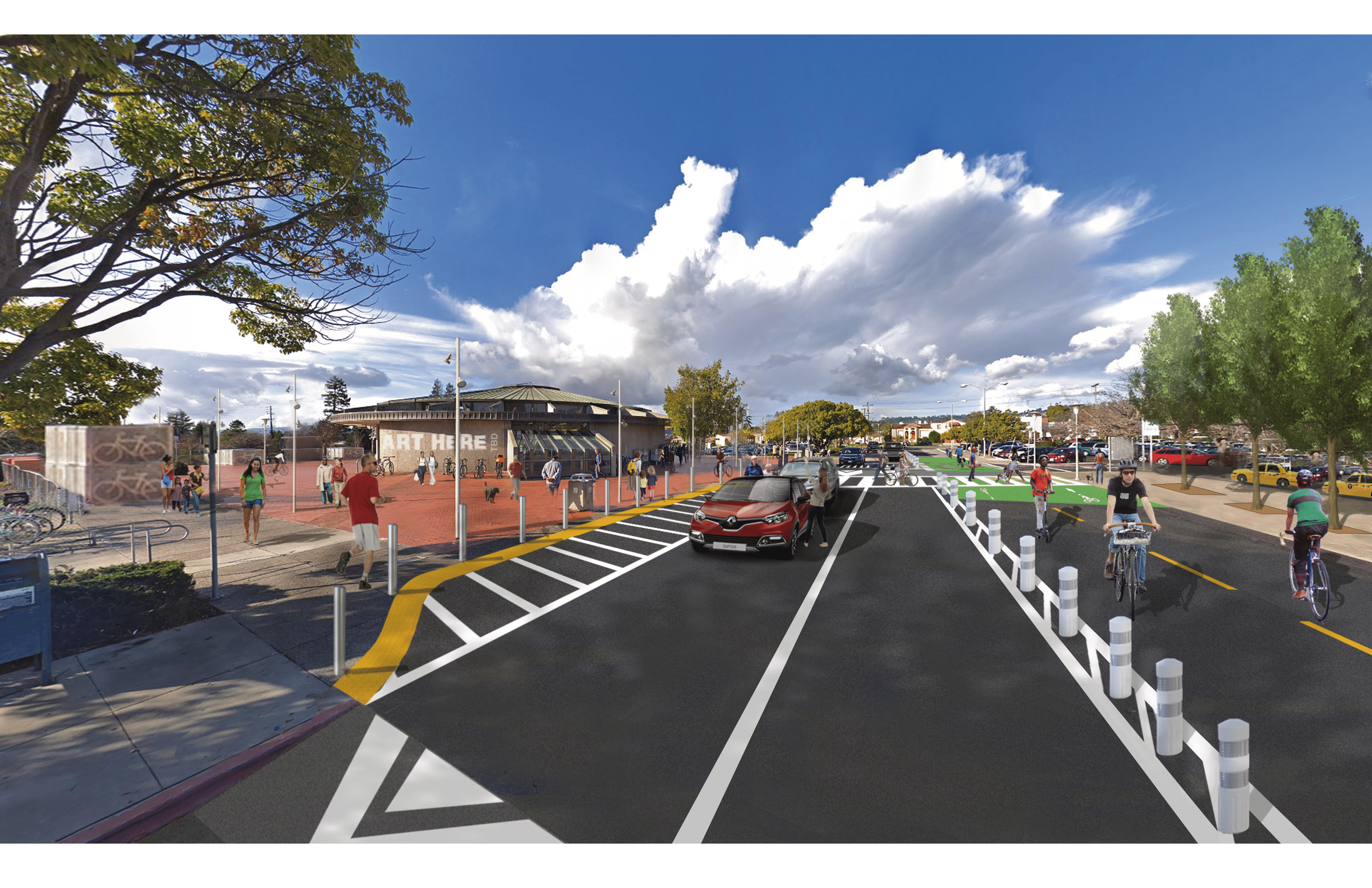
BART is implementing bicycle and pedestrian improvements at North Berkeley Station to:
- Advance the 2016 Station Access Policy goals (safer, healthier, greener) & targets (52% active access by 2025)
- Improve all access to the station, particularly for those who bike given the high demand in the area and the lack of dedicated bike infrastructure prior to the project.
- Improve the Ohlone Greenway connection around the station area and up to Franklin Street
Dublin/Pleasanton Bicycle and Pedestrian Access Improvements
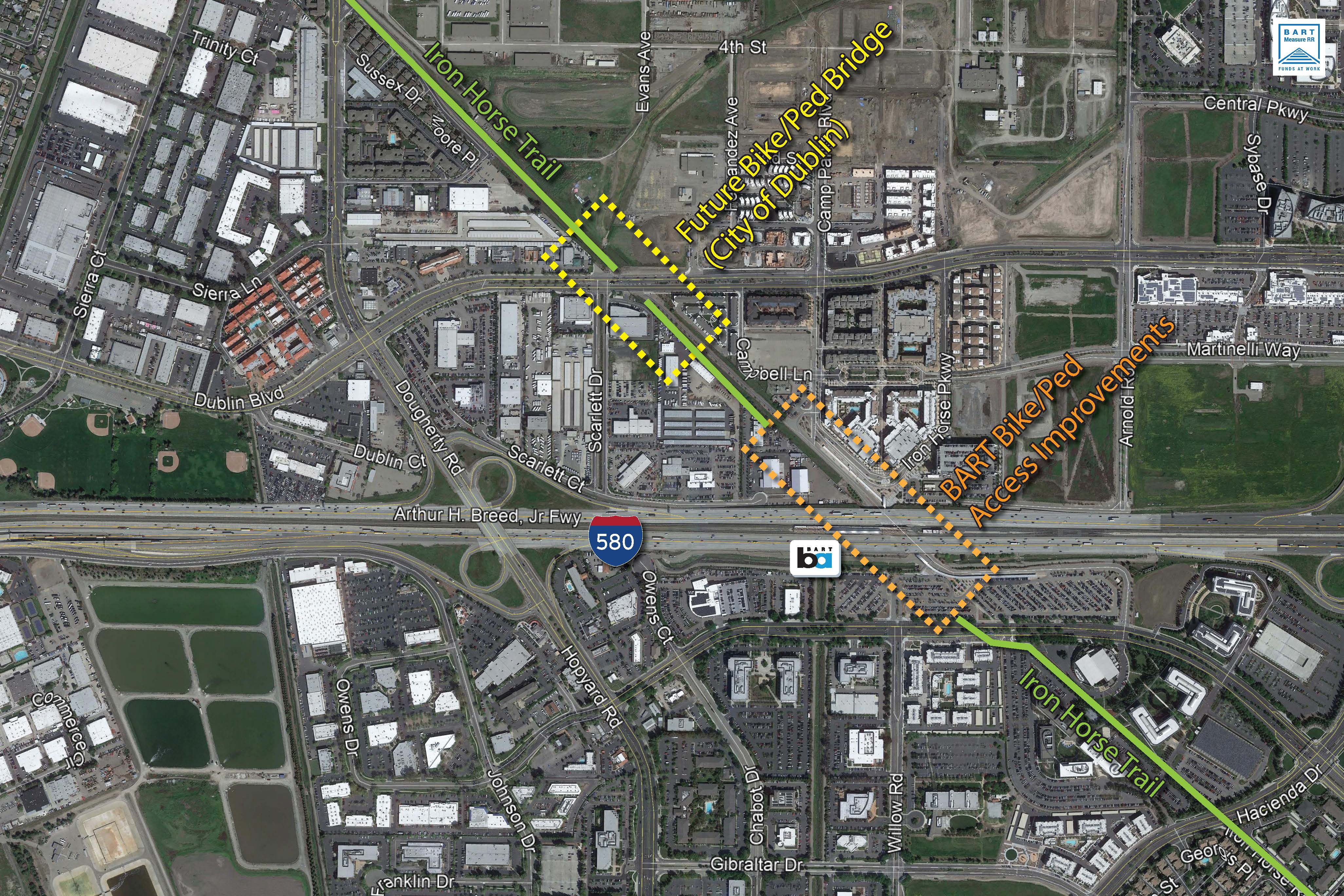
As an end-of-the-line station, Dublin/Pleasanton attracts BART riders from many distant locations. For these riders, the only really viable options for accessing BART are to drive and park at the station, or to ride a regional bus. BART is implementing bicycle and pedestrian improvements at Dublin/Pleasanton BART Station to:
- Advance the 2016 Station Access Policy goals (safer, healthier, greener) & targets (52% active access by 2025.
- Make walking and biking to BART a better, more attractive option for more people who can and want to walk and bike to Dublin/Pleasanton station.
- Fill a major gap in the regional Iron Horse Trail.
Recently Completed Projects
Berkeley-El Cerrito Corridor Access Plan (2023)
BART is helping address the housing and climate crises by fulfilling state, regional, and local goals to build housing around El Cerrito Plaza, North Berkeley and Ashby stations as transit-oriented developments. These developments will result in more than 2,000 new mixed-income apartments that maximize housing near transit, improving sustainable transportation options to work, school, and recreation for people of all abilities and income levels. The Berkeley-El Cerrito Corridor Access Plan, funded by California's Department of Transportation, identifies access strategies along the Richmond line that more equitably distribute BART's investments in walking, rolling, biking, riding transit, driving, and parking.
Means-Based Parking Pricing Study (2023)
BART’s Parking Policy, last updated 2013, sets a price cap of $3 for daily parking at most stations. The BART Board of Directors is considering increasing this cap and is concerned about the impact on low-income BART riders, especially those who have few alternatives to driving. This Means-Based Parking Pricing Study evaluates options for improving the affordability of BART for low-income riders who drive and park.
BART Walk and Bicycle Network Gap Study (2020)
BART’s Board-adopted Station Access Policy (2016) has a goal to advance the region’s safety, public health, and greenhouse gas (GHG) and pollution-reduction goals, with a particular focus on improving pedestrian and bicycle access to stations. To advance this, BART has released the BART Walk Bike Network Gap Study. It includes specific recommendations to improve walking and biking access to 17 stations, as well as global recommendations that may apply to all BART station areas, both on and off BART property.
